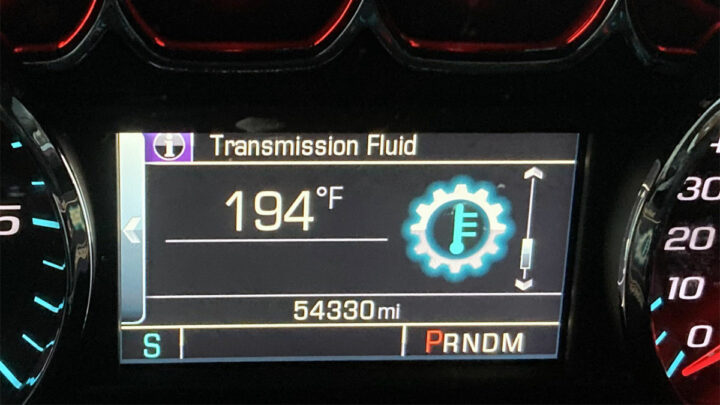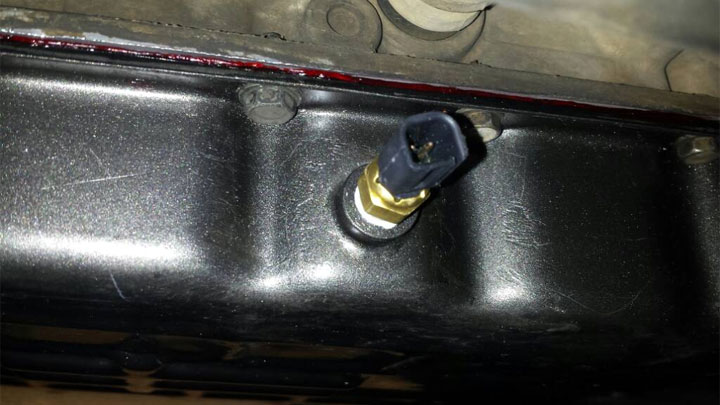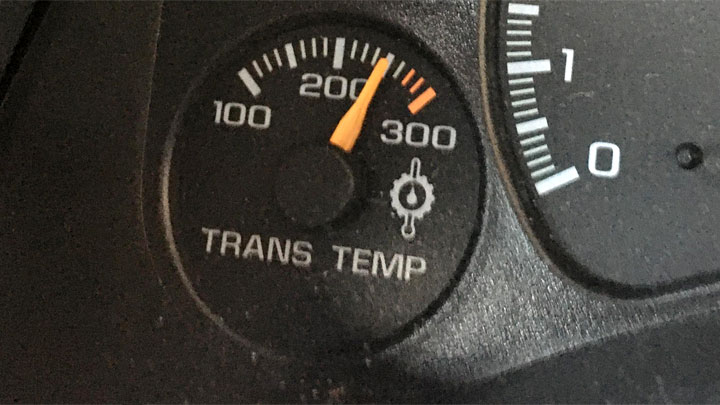Is Your Transmission Running Too Hot? (Normal Operating Temps)
Ever wondered if your car’s transmission is running too hot or cold? The transmission temperature can indicate serious issues, or be perfectly normal. Getting it right matters since too hot can destroy the transmission, while too cold reduces its efficiency.
Let’s look at what’s considered a “normal” transmission temperature, factors that influence this temperature, and what happens if you transmission temperature gets too hot (or not hot enough).

What Is a Normal Transmission Temperature Range?
Generally speaking, the average operating temperature of a transmission typically falls into a range of 170 to 225 degrees Fahrenheit.
Any temperature above or below this threshold after a sufficient warm-up period should be investigated and merits further investigation. Prolonged service at temperature ranges outside of this range can cause accelerated wear and/or irreversible internal transmission damage.
Factors That Affect Transmission Temperature
There are several prominent factors that can affect a vehicle’s transmission temperature. The implication of such factors largely differs from one model of vehicle to the next, and the specific application applied.
Weather Conditions
The hotter the ambient air temperature, the more difficult it will be to keep a vehicle’s transmission cool. Generally speaking, a transmission can run a full 10 degrees warmer on an extremely hot day, than it otherwise would.
Fluid Health
A vehicle’s transmission will almost certainly run at higher temperatures when the lubricating fluid contained within is allowed to degrade substantially. Likewise, such conditions can also arise if corresponding transmission fluid levels drop below prespecified thresholds.
Cooler Efficiency
Many vehicles come equipped with auxiliary transmission coolers, that dissipate heat, thereby lowering transmission operating temperature, as a whole. If these coolers are plugged, or otherwise restricted, cooling capabilities will be limited.
Driving Applications
The operating temperature of a transmission is also largely a product of the manner in which the vehicle in question is operated. A vehicle driven aggressively, or used in towing applications will generally see higher transmission temperatures than those that are not.
How Is Transmission Temperature Measured?

Transmission temperatures are measured through a system-specific temperature probe, mounted within a transmission’s test port, or directly to the transmission in question’s oil pan.
This probe delivers electronic feedback to a vehicle’s TCM (Transmission Control Module) and PCM (Powertrain Control Module). These readings are then interpreted and displayed via a dash-mounted gauge, where applicable.
In applications where no dash-mounted transmission temperature gauge is found, the same readings as those mentioned above are typically used to illuminate a “transmission temp” light, or to prompt a transmission-related warning upon the affected vehicle’s dash.
This light serves as a notification to the vehicle’s driver that unfavorable transmission temperatures have arisen.
See Also: Code P0711 (Abnormal Transmission Fluid Temperature)
At What Temp Does Transmission Fluid Overheat?

At temperatures in excess of 240 degrees Fahrenheit, the chemical makeup of most automatic transmission fluids begins to degrade. As a result, included lubricating packages and corrosion inhibitors are less apt to perform at peak levels.
When operated under such less than ideal conditions for a prolonged period of time, internal transmission damage is almost sure to result.
Additionally, repeated overheating of a vehicle’s transmission can prove equally harmful, even if the vehicle’s transmission does not operate at such excessive temperatures for lengthy periods under each occurrence.
The resulting condition is much the same, ultimately leading to rapid transmission fluid breakdown.
What Happens When a Transmission Gets Too Hot?

A vehicle can suffer a number of consequences when its transmission begins to overheat, some of which tend to be more troubling than others.
Generally speaking, transmission fluid begins to thin as it overheats, thereby causing deviations in viscosity. Simply put, as transmission fluid thins out under circumstances such as those mentioned above, detrimental pressure changes occur within the transmission itself.
In many instances, a transmission will hesitate, or shift harshly when its fluid begins to thin at the hands of overheating.
Additionally, wear is accelerated within the transmission itself, as the transmission fluid contained within begins to thin. Over time, this can take a severe toll upon a transmission, severely reducing its longevity.
In any event, further diagnosis will be required, if ever a vehicle’s transmission rises above normal operating temperature, and remains at abnormal levels, for a prolonged period of time. A failure to address such concerns can ultimately lead to catastrophic transmission failure in short order.
Can the Transmission Temp Be Too Low?
Though not as overtly harmful as excessive transmission temperatures, extremely low transmission temperatures can also be cause for concern.
The lower a transmission’s temperature, the thicker the viscosity of its lubricating fluid becomes. When such fluid becomes too thick, its flow is greatly reduced. A lack of adequate transmission fluid viscosity can lead to advanced internal wear and irreversible internal damage.
Generally speaking, prolonged transmission operation at temperatures below 150 degrees Fahrenheit serves as a valid threshold for such concerns. This concern grows substantially when temperatures plummet below this point.
What to Do if Your Transmission Starts to Overheat

On occasion, it is possible for a vehicle’s transmission to overheat. This happens predominantly when towing a trailer or hauling heavy loads.
Outside of these two conditions, the most common cause of transmission overheating is mechanical failure of one sort or another. It’s crucial to know how to address such circumstances, should you be faced with an overheating condition.
Above all else, you should make it a point to pull over to avoid further strain, should you notice that your vehicle’s transmission is overheating. It’s also a good idea to check the level and condition of a vehicle’s transmission fluid under conditions of this type.
Ultimately, a vehicle’s transmission should be allowed to cool sufficiently before proceeding, or alternatively, the vehicle should be towed to the nearest point of repair.
Tips to Keep the Transmission Cool
The following are several key tips to ensure that your vehicle’s transmission remains cool, under even the most extenuating of circumstances.
Check Fluid Regularly
If a vehicle’s transmission fluid is allowed to break down over time, overheating is sure to result. If you notice that your vehicle’s transmission fluid appears burnt during the periodic inspection, further service should be considered.
Use Neutral
If you notice that your vehicle’s transmission is under a strain, especially in the midst of extenuating circumstances such as towing heavy loads, you are best to consider shifting to “neutral” while Idling. Shifting to neutral removes a transmission’s load, thereby allowing it to cool.
Add Additional Coolers
Most vehicles utilized in towing applications come equipped with factory transmission coolers. However, these stock coolers often prove inadequate for heavy towing applications, thereby allowing a certain degree of overheating.
In some cases, the addition of auxiliary transmission coolers or upgrade of your stock cooler can serve as a worthy investment.
- P0480 Code (Symptoms, Causes, and How to Fix) - Apr 19, 2024
- Car Temperature Gauge Stopped Working? (Here’s Why) - Apr 15, 2024
- Ignition Coil vs Coil Pack (What’s the Difference?) - Apr 8, 2024
